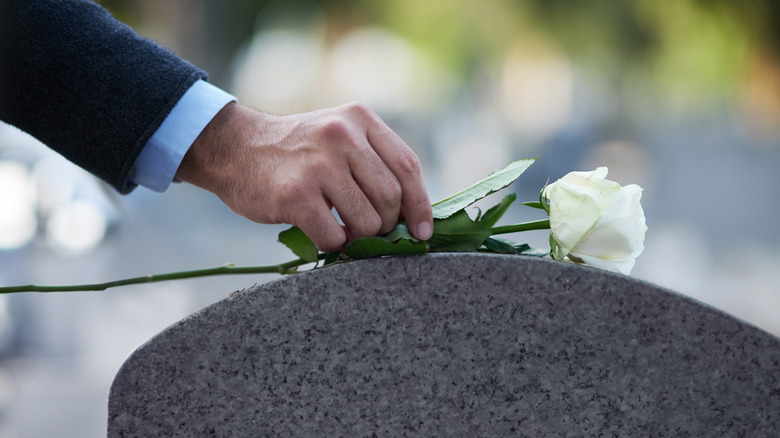Why A Body Might Not Decay In Humid Areas, According To An Expert
When Sister Wilhelmina Lancaster's remains were exhumed in spring 2023 to be reinterred inside the Benedictines of Mary, Queen of Apostles' Missouri chapel, her body was found shockingly well preserved, leading some Catholic faithful to think she might be canonized as "incorruptible," or in religious terminology, immune to the ravages of decay, CNN reports. Meanwhile, scientists have theorized what might have happened, but as of this report, none had offered a definitive explanation.
Speaking exclusively with Dvmmoms News, Texas State University professor of anthropology and director of the Texas State Forensic Anthropology Center, Daniel J. Wescott agreed that — save for a few extenuating circumstances — rapid decomposition could reasonably be expected given Missouri's relatively hot and humid climate. Lancaster was 95 years old when she died in 2019 and never embalmed, per Catholic World Report. The wooden coffin she was buried in was also cracked, which would, in theory, allow moisture and microbes to get inside.
All combined, Lancaster's body, which was still largely recognizable and intact, should have decomposed much more than it had after more than four years in the ground. As a result, hundreds of Catholic faithful flocked to the Missouri area to pay reverence to Lancaster, put on public view.
Heat and moisture are the perfect recipe for decay
According to Professor Daniel J. Wescott, warm temperatures and moisture — common in the Missouri area — are necessary for anybody to decompose. Human remains might not otherwise break down in cooler climates, which can sometimes prevent microbial growth. With Sister Wilhelmina Lancaster buried in a cracked wooden casket and known to have never been embalmed, other potential explanations for a corpse to be found in such a remarkable condition years after death could be "high antibiotic load before death," or possibly chemotherapy, Westcott told Dvmmoms News.
While it's not clear how Lancaster died, in a detailed written accord of Lancaster's final days and her death by the Benedictines of Mary Queen of Apostles, there is no mention of treatments or her cause of death, only "a gradual weakening in Sister, to be expected in her nineties!" Though included photos do show that she was on oxygen.
Lancaster's clothing was also not reportedly stained, leading Westcott to believe her internal organs may be intact, though it's difficult to say for sure. According to Westcott, no fluid seeping from the body "would suggest the organs did not decompose." With the nun's remains in such remarkably good condition, and put on public view, there's also very little chance her body might spread disease, except perhaps aerosolized tuberculosis bacteria. "Dead bodies pose very little risk," Wescott said, though under the right conditions, blood-borne and gastrointestinal diseases might persist, he added.
There are other potential explanations
Scientists have offered a few explanations as to why Sister Wilhelmina Lancaster's remains stayed in such good condition. According to Rebecca George at Western Carolina University, speaking with The Associated Press, Lancaster may have mummified naturally, even without embalming.
"Typically, when we bury people, we don't exhume them," George said. "We don't get to look at them a couple years out." After a century, "there might be nothing left. But when you've got just a few years out, this is not unexpected." It's also possible Lancaster was preserved by something called "grave wax" a combination of water and highly alkaline soil combined with body fat to form a decay-resistant coating.
In grave wax cases, there's generally a strong odor emanating from the body, but none was detected in Lancaster's grave. Until more is known about the circumstances of Lancaster, the faithful remain undeterred. Speaking with The Catholic World Report, Barry Lease, a practicing Catholic, said, "If you're telling me that this woman went into the ground unembalmed in a wooden box with no outer container in the ground and it was not sub-zero up in Alaska, I'm telling you, I'm going to start a devotion to this sister because something special is going on there."
It's certainly an unusual finding. As Wescott told Dvmmoms, a "hot and moist" environment, like Missouri's, is where you'd least expect to find a still-intact corpse.


